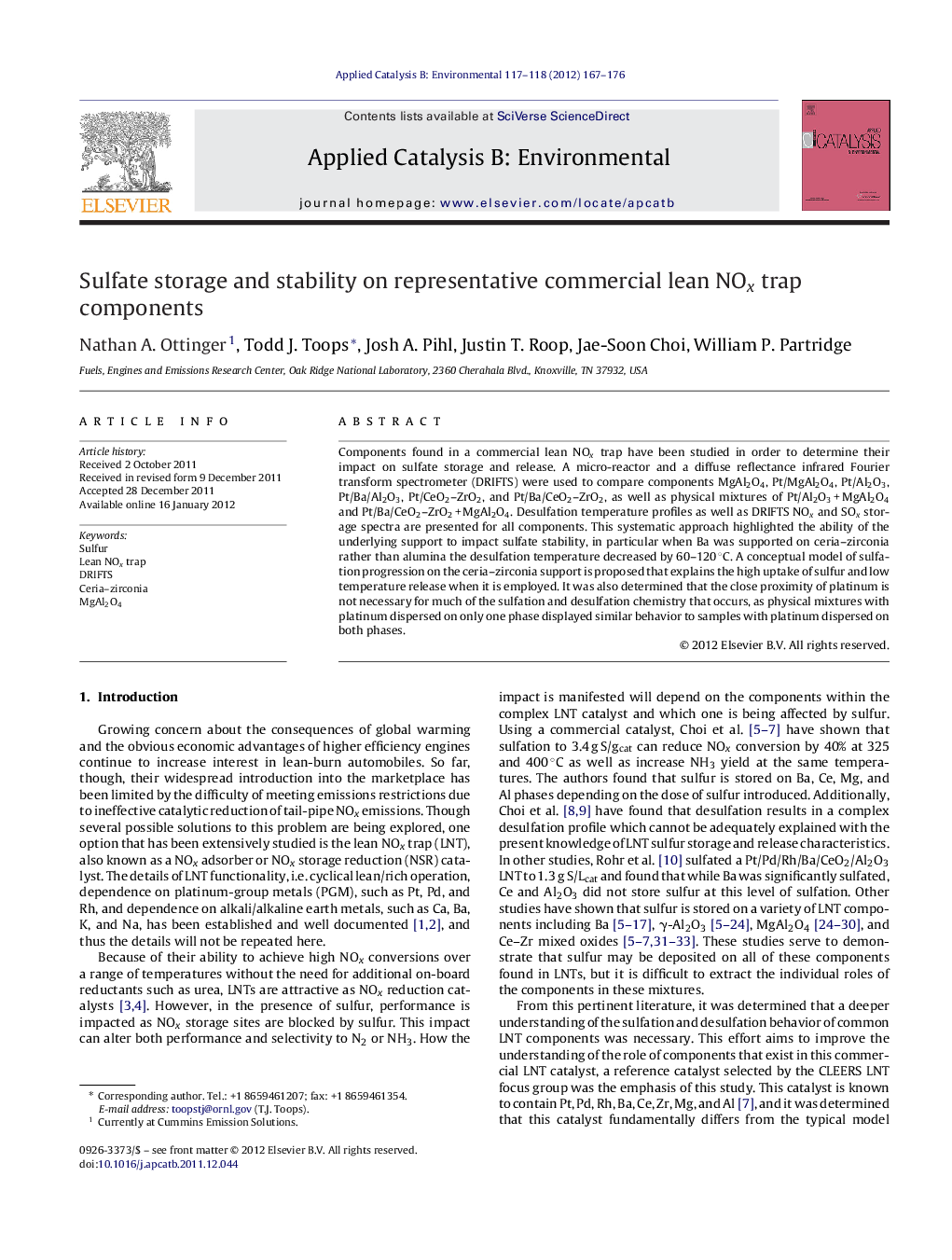| Article ID | Journal | Published Year | Pages | File Type |
|---|---|---|---|---|
| 46366 | Applied Catalysis B: Environmental | 2012 | 10 Pages |
Components found in a commercial lean NOx trap have been studied in order to determine their impact on sulfate storage and release. A micro-reactor and a diffuse reflectance infrared Fourier transform spectrometer (DRIFTS) were used to compare components MgAl2O4, Pt/MgAl2O4, Pt/Al2O3, Pt/Ba/Al2O3, Pt/CeO2–ZrO2, and Pt/Ba/CeO2–ZrO2, as well as physical mixtures of Pt/Al2O3 + MgAl2O4 and Pt/Ba/CeO2–ZrO2 + MgAl2O4. Desulfation temperature profiles as well as DRIFTS NOx and SOx storage spectra are presented for all components. This systematic approach highlighted the ability of the underlying support to impact sulfate stability, in particular when Ba was supported on ceria–zirconia rather than alumina the desulfation temperature decreased by 60–120 °C. A conceptual model of sulfation progression on the ceria–zirconia support is proposed that explains the high uptake of sulfur and low temperature release when it is employed. It was also determined that the close proximity of platinum is not necessary for much of the sulfation and desulfation chemistry that occurs, as physical mixtures with platinum dispersed on only one phase displayed similar behavior to samples with platinum dispersed on both phases.
Graphical abstractFigure optionsDownload full-size imageDownload as PowerPoint slideHighlight► Supporting Ba on ceria–zirconia rather than alumina decreases the sulfate stability. ► Oxygen storage in ceria–zirconia impacts sulfur distribution during cycling. ► Pt proximal to sulfate sites not essential for sulfation or desulfation. ► MgAl2O4 can store sulfur in physical mixtures and may protect Ba-phase.
